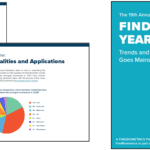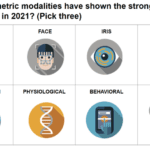
It’s no secret that the past year has been particularly transformative for the identity industry, with the ongoing trend of digital transformation colliding with the remote-first paradigm spurred on by the pandemic. A the forefront of that industry evolution is FacePhi, a global biometrics and identity specialist with solutions for authentication, remote onboarding, and passive liveness detection.
In this interview with Peter O’Neill, Founder of FindBiometrics, FacePhi CEO Javier Mira offers his expert views on the unprecedented change our industry has seen in recent times, drilling deep into the mobile and connectivity trends that have enabled mainstream acceptance of post-password identity technologies like biometrics. He discusses FacePhi’s recent partnership with continuous authentication company Revelock, recent advances in liveness detection, and FacePhi’s privacy-first approach to identity he terms “ethical biometrics.”
Read our full interview with Javier Mira, CEO, FacePhi:
Peter O’Neill, Founder, FindBiometrics: This has been an incredible, unprecedented year of change in our identity market. As a global operator, what do you see as the main drivers behind this rapidly changing environment?
Javier Mira, CEO, FacePhi: In terms of drivers of change in the last year that has been affected by the pandemic, I would consider two main points. One relates to the data that is flowing through our online worlds and another one is adoption dynamics, which are very different from before. Talking about the data, we have to take into account the data growth and commercialization. We now have over 8 billion smartphones worldwide. That is more mobile phones than there are people on the planet! In places like the UK there are 1.3 phones for every person, and in Hong Kong it is a staggering 2.5 phones per person. There is also the incredible rise in the number of IoT connected devices in the last few years. For example, in 2015 there were 15 billion IoT connected devices. In 2019, we had about 26 billion IoT connected devices, but this is expected to surpass 75 billion by 2025. So, there we can see the impact of the growth of devices which is helping to drive change.
So that means that the use of these type of devices are more and more in our hands and that is very much driving the change, coupled with the fact that we are spending more and more time ‘online’ with our devices. We have to also take into account the threat management that we have every single day. We have to keep bad actors out of the system, because obviously, or unfortunately, the threat of fraud is a very real thing. And with organized crime and potentially bad actors seeking to take advantage of the weaknesses, we have to enlist the use of these types of technologies related to biometrics and many others related to identity management.
The second driver of change that I will mention would be the adoption dynamics. Of course, we have all seen how the pandemic has accelerated the processes of adopting these types of technologies. We now accept that remote interaction is a normality on a daily basis. As a provider of secure biometrics and onboarding solutions to some of our biggest banks, we have seen the incredible rise of remote onboarding as well as ongoing biometric verification for logins and transactions.
We have also been working with our customers to meet the needs of some of our most vulnerable populations through the pandemic. With FacePhi’s technology, for example, we completely changed the way pensioners in Argentina are receiving their pensions. Instead of experiencing delays of days or weeks while branches are restricted or closed, they are using our technology for liveness detection, authentication, et cetera, in order to access their pension immediately, without any need to physically visit a branch. We are very proud of the work we did to bring these solutions to life with our banking partners to keep their customers safe and away from high risk environments during the height of the pandemic.
Peter O’Neill: Well you know, Javier we’ve had this discussion many times over the years discussing the trends in our industry. And my goodness, you’re absolutely right. This past year has just exploded the speed of change. And given this rapid change, the user journey has also had to adopt and adapt to what’s going on. What trends are you seeing in how we manage authentication and identity?
Javier Mira: Well, you and I have talked about this many, many, many times over the years and in this case, I would consider that the message is exactly the same as it was many years ago, the only difference being that the pandemic has accelerated the process.
But basically speaking, I think that we all agree that passwords are coming to an end. I remember giving a speech a number of years ago, where on average a person had more or less 25 passwords. For each one of us today, this number is 100. So, you can imagine an average of 100 passwords that anyone is using on different websites, et cetera. But unfortunately, passwords are not easy to remember and, in many cases, we use very simple passwords in order to make the process easier and this creates a complete hole in terms of security. As we have been saying, there is a much better way that increases security while making the process very easy for the customer, and in a way that their precious personal information, such as their face or fingerprint, is kept private and not shared.
Biometrics are much more convenient for authentication, but at the same time, are much more secure than regular passwords. The increase in password demands has become overwhelming and people are saying ‘enough!’. This is one of the original problems that we saw coming and is something we have been speaking about and promoting for the last seen years or more.
Peter O’Neill: Javier, you mentioned convenience there. And what a driver that is, because there is so much frustration in the marketplace right now with passwords. People are just absolutely fed up. But again, as you mentioned, the pandemic has just forced everybody to recognize that we need to change now. We can’t continue to operate the way we have in the past.
Now I’d like to talk a little bit further about the user experience if I may. How can things like more data points, behavioral analysis, sensor data, and other types of parameters be used for enabling a seamless user experience?
Javier Mira: Well, I think that obviously all technologies are moving forward and have improved in the past few years, and specifically in terms of biometrics. I think that for example, to be able to use passive biometric technologies. In our case, we noticed that it’s been really, really strong and it’s been really embraced by the industry and more specifically by the end user.
So before, for example, when we had to determine if a person was alive, we were using kinds of technologies where you had to prompt you to move your head, or you had to blink your eyes, or you had to open your mouth or pronounce a specific word. And today we use a technology called passive liveness technology, where we analyse in real time the image, in the case of facial recognition. Just by analyzing the selfie image, we’re capable of detecting whether it’s a real person, or a picture, or a video that is in front of the camera. We have advanced the technology to the point where we no longer need to issue prompts whilst maintaining the highest levels of performance and accuracy.
New sensors, better cameras and the more powerful components and hardware of personal devices are helping us to start using these types of technologies. Obviously, these technologies are very well-developed using AI processing power. I should note here that our technology does not require customer to invest in the latest devices. We work very hard to ensure our system work with even the most basic phones so the solutions are as accessible as possible. So, in the end, we think that this process is going to come on strongly in the coming years for the biometrics and identity in general.
Peter O’Neill: I think we’ve just received a press release, announcing a partnership between your company and Revelock, which is the old Buguroo company, that probably boosts the defenses with continuous biometric user verification along these same lines. Is that correct?
Javier Mira: It’s something that we recently announced and we know Revelock very well which as you mentioned, used to be known as Buguroo. I also remember conversations with you in the past, on several panels, that when someone asked which biometric is the best – is it facial, is it voice, is it behavioral, or whatever – and we always insisted that in the future that the most powerful tool would probably be the combination of several technologies and biometrics.
And in the end, this is the result of that vision and conversation. We just announced this alliance with Revelock because both companies are growing a lot in the terms of identity management and fraud detection, and we have very complimentary technologies. FacePhi’s market-leading biometric authentication and liveness detection technologies can be used hand-in-hand with Revelock’s AI-powered continuous behavioral analysis. Together we can ensure that, for example, the person who is transferring money via a mobile banking app is the same person who signed in with their face, voice or fingerprint. So, I think this relationship should be very successful as we are both providing a much more complete solution to our banking partners in a way that enhances the protection of their customers.
Peter O’Neill: I think it’s a wonderful combination. Congratulations on that.
I’d like to shift now the conversation to privacy. This rapid change and transformation that we’re going through has brought about a heightened concern and awareness regarding privacy. What are you finding as a global operator? Again, you experience so many different privacy regulations and privacy situations in Mexico, South Korea, Europe. What are you finding out there right now?
Javier Mira: Well, privacy was an issue before and privacy is an issue today in terms of how you manage the data and how you start using biometrics. There is widespread concern that facial recognition in some specific surveillance type scenarios violates our privacy and undermines trust in our society. That is not the way we use facial recognition technology – in fact we don’t store actual facial images or fingerprints. Our technology is specifically designed to preserve the privacy of the customer by only capturing characteristics of the image and not the image itself. And this image can never be reverse-engineered – it isn’t event stored on the customer’s own device.
In terms of biometrics or facial recognition, it’s exactly the same. And that’s why at FacePhi we secured, a couple of years ago, a term called ‘ethical biometrics’. This is how we build our technology; it is designed to minimize the use of any personal information, and it is only used when the end user had consented to use the technology. This is an important message for everyday people or ‘end users’, but also the industry and regulators and governments.
So this is very important; you can keep your privacy if you want to keep your privacy. And it’s an option that you can use always, if you say yes to use your template or your biometrics patterns to be used for any scenario within a financial entity; to withdraw some money, to do any transactions with your money, et cetera. But it is in your hands to decide whether to allow use of this information or not, and to be able to alter those settings if you change your mind. This is the key point, everything is transparent, and the customer is given clear and simple choices.
And specifically in Europe, you know that the European regulation is quite strong. We are paying a lot of attention to regulation of this specific issue, like biometrics, and more specifically for facial recognition. So, governments are accepting that the trend of using biometrics is increasing, but at the same time, we need to protect people’s privacy with the GDPR being currently the leading standard, and many more like this to come, probably.
We believe that biometrics are at the heart of human-centred technology design, and we believe this can be done ethically, enhancing and upholding privacy. We are paying a lot of attention to compliance, but at the same time we are working with the regulators, the tech industry and the public to show them how ethical biometrics help create a better online world. It’s a question of adapting biometrics with the regulations and standards, and trying to move the regulation and the standards step-by-step in order to use biometrics in a better way, always keeping privacy protected.
Peter O’Neill: Javier, that was very well expressed. And I really like your ethical biometric approach. We here at FindBiometrics, agree a hundred percent with that approach. Education, as you mentioned, is critical because as with all new technologies, it’s very important, especially for end users, to recognize that there are ways to make sure that they are in control of their information.
In recent months, you’ve brought in millions in financing, and you’ve more than doubled your staff in 2020. Can you talk a little bit about your growth strategy moving forward? What’s next for FacePhi?
Javier Mira: Well, Peter, you know that FacePhi was able to raise about 40 million US dollars by the end of last year in order to grow the company in exciting new ways, and we’re on that path. Last year in 2020, we were able to sign another 22 new contracts with financial entities. So, the company has today more than 90 banks using our technology.
Prior to the pandemic, FacePhi employed 25 people. And today we are really proud to say that we have more than 120 people in the company. This includes our subsidiary in South Korea, and we created a technical team in Uruguay to enhance support in the Latin American area. But also, from an R&D point of view, we are rapidly improving and innovating our technologies with a supercharged team. In the last year we have grown from five, six people in research to 35 today, and from seven, eight people in product development to having more than 40 people just focused on the product side of the technology.
And then on the same growth path, we have managers responsible for local business development in different areas that are also helping grow the company, and our strategic partner ecosystem is growing all the time. Specifically in this very moment because we can not travel a lot even if we would like to, we have people established in Mexico, Colombia, Brazil, as I said, South Korea and Argentina. This part of the team is helping spread the businesses as much as possible. What we consider the next two to three years in FacePhi is that on one hand, we have some amazing product developments that are being enhanced and tested. The satisfaction rate from our customers is extremely high with more than, as I said before, 90 banks very happy to be partnered with FacePhi. And we are already working with clients in sectors other than banking as well, for instance we are already seeing our technology and expertise used in healthcare services in South Korea. We have a strong demand for these technologies coming from all across the world.
We now have a very good team of people, as mentioned, from 25 to 120, and probably we will be ending the year with about a couple of hundred people in the company. And we also have the investment to manage rapid growth whilst maintaining FacePhi’s heart. So, we consider that in the next two to three years, FacePhi’s strategy and FacePhi’s targets should be really, really positive. I think the only challenge that we have on our hands is to be capable of managing this growth! I would say that this is my biggest challenge and greatest opportunity for the next couple of years.
Peter O’Neill: Well, that is an exciting challenge to have, Javier. Thank you so much for carving out some time. I know you must be very busy with all this going on and they’re really appreciated. And I look forward to future conversations to learn more about your growth.
Javier Mira: Thank you, Peter, very much. Always a pleasure.







Follow Us